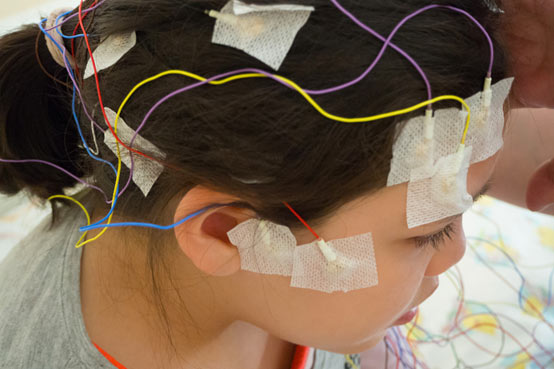An Electroencephalogram (EEG) tracks and records brain wave patterns.
It is the most common test used to find problems related to electrical activity of the brain.
It is mainly done to diagnose and monitor seizure disorders. If they see changes in a patients normal brain wave pattern, then that’s a symptom which identifies epilepsy and therefore, considered an abnormal EEG. However, it can also detect other problems such as sleep disorders and changes in behavior.
The procedure can be done while lying on a bed or sitting on a chair, fully clothed. A routine EEG recording usually lasts between 20-40 minutes however, other types of EEG recordings may take longer.

It isn’t painful, but a bit uncomfortable. The EEG technician will attach electrodes using adhesive paste on different areas of the patients scalp to record brain activity.
The brain cells communicate through electrical impulses and the recorded activity shows up as wavy lines on a computer screen. The patient will not feel any shocks on their scalp or anywhere else on their body. They may be asked to look at a bright flickering light or breathe in a certain way.
The technician is well prepared in case any issues arise during the test. The doctor may ask for a Video EEG to record how the body reacts during a seizure. This usually requires an overnight stay or longer at the hospital.
Site Pages:
helpful information:
All rights are reserved to the Eyal Association – Israeli Epilepsy Association © 2022